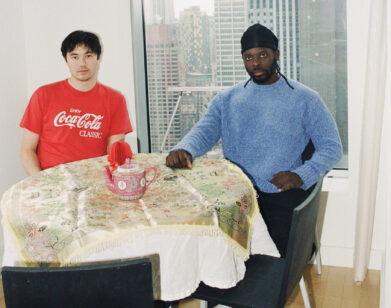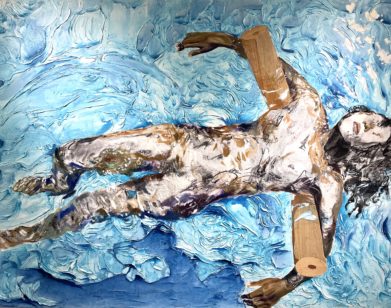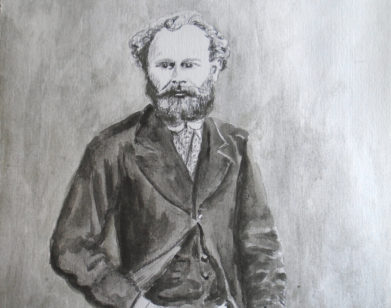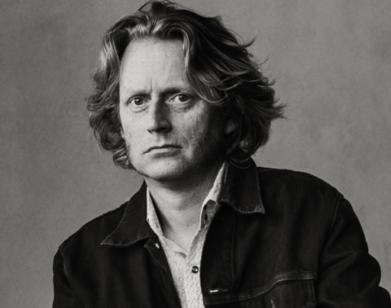IN CONVERSATION
Artists Curtis Kulig and Yves Scherer on Longing, Leverage, and Madness
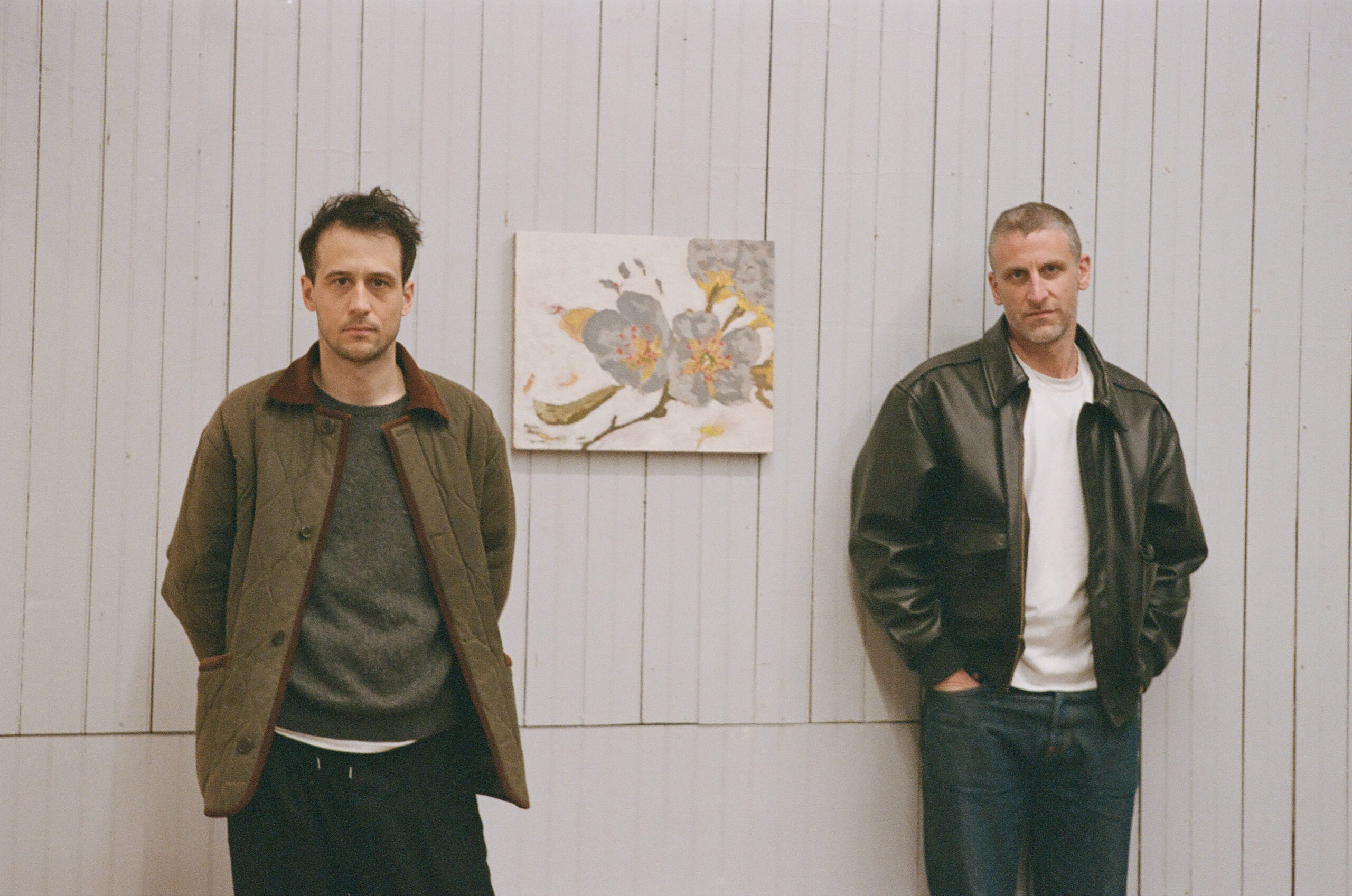
Yves Scherer and Curtis Kulig, photographed by Chando Ao.
Where do our deepest desires surface when left unaddressed? The Swiss-born artist Yves Scherer has some thoughts. “Whatever I’m missing in life or wishing for subconsciously gets expressed in my art,” he posited to his friend and Curtis Kulig on the phone. “It’s an idealized thing you lack.” The two are part of a group show currently on view at YveYANG titled sehnsucht (longing), a reference to the German word that describes a painful state of yearning for something unattainable. Beyond a case of simply wanting or needing, it taps into something far away and romanticized, which the likes of C.S. Lewis and Freud have long suggested motivates our behavior. Just after the show opened, the two artists got to the bottom of some subconscious desires, André Butzer’s onetime aircraft-factory-turned-studio, and who stole who’s girlfriend when they first met.
———
YVES SCHERER: The way we came to this show was because I was looking for somebody to work at the studio, and Stavroula [Coulianidis] applied for the job. When I spoke to her I said, “I think you’re overqualified for what I’m looking for, but I’m working on a book of sculptures, and maybe you could interview me for that.” So that’s what we did. Then just a week or two after, she was like, “I’m actually doing this show in Soho at YveYANG. Would you be interested in showing some work?” And after I agreed she asked, “Do you have any other “mature” artists you want to include?” So I recommended Curtis, and that’s how the show came together.
CURTIS KULIG: Yves thinks I’m one of the most mature artists that he knows. We’ve known each other for a little over 10 years now. When I was moving out of my Lafayette space, I had quite a few large scale stretcher bars that I was trying to get rid of. A friend told me, “I know this guy that’s working in the Bronx and he would like to have them.” So the next day, Yves drove a truck down to pick them up and that was the actual first time we met. Shortly thereafter, I found out that he was the Swiss artist dating my ex-girlfriend.
SCHERER: And she actually left me to go back to Curtis. I got sacked. Anyway, why did you get rid of the stretchers back then?
KULIG: I didn’t have the space. They were very large.
SCHERER: To be honest, I didn’t make anything good on them in the end. I still have them downstairs.
KULIG: They were never put to good use.
SCHERER: Would you ever paint on some bigger things than you do now? Also in a bigger studio, you could probably make bigger paintings?
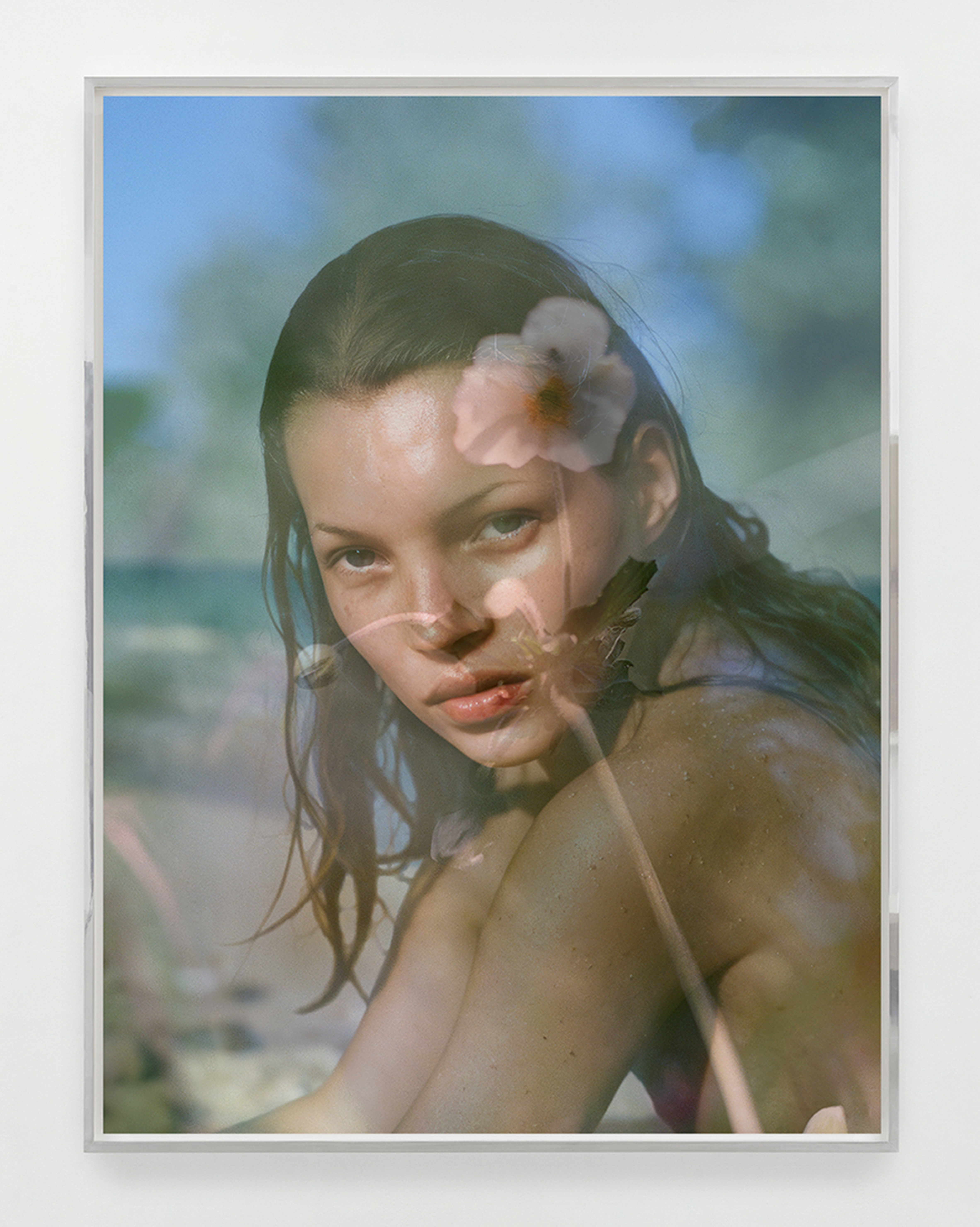
Yves Scherer, Imagine (Kate Summer Flowers), 2025, 48.63×64.38 in. Courtesy the artists and YveYANG Gallery
KULIG: This is the smallest studio I’ve had in a while, but there’s still space to make large-scale works. But I’ve been making a lot more small or medium works.
SCHERER: Do you think that’s because of the way you paint? That painting that we hung at Nick’s the other day is a fucking fire painting. That one is huge, and you did that in a very big studio. That’s the thing, you can’t make small work in a very big studio. It’s much better to have a small studio if you want to make a big painting. I feel like it dilutes the quality when you have too much space.
KULIG: I agree.
SCHERER: It’s funny, you know André Butzer, the painter?
KULIG: Uh-huh.
SCHERER: He has a studio in Chelsea, but he’s a German artist who showed at the same gallery as me. He did an abstract painting exhibition once titled Probably the Best Abstract Painter in the World, and he literally bought the whole airport outside of Berlin. The hangars were his studio, and there was almost a village next to it where people who worked at the airport lived. And the airport was no longer functional, so they were just people who worked at his studio. In his work before the airport, he made these almost folkloric, abstract paintings. Then he started making these huge pieces he calls the “N-paintings,” as in “Nirvana.” They’re literally just black shapes with white space in between, almost like a [Frank] Stella but even more simple. That’s just what came out of that airport. I thought, that’s the only thing you can really make there. That’s why I’m kind of in favor of small studios.
KULIG: It’s funny thinking about having an airport-sized space and environment to work in while making small works.
SCHERER: For the paintings in this show, did you paint differently than how you used to?
KULIG: No. I think the difference is that it’s less of a gesture in terms of painting from my wrist versus painting more so from my shoulder. I’m large, so I’ve always liked painting big just based on that movement. But with these works, I’m working on just stepping back and not working the paint, but letting the paint kind of work for me.
SCHERER: Do you sit?
KULIG: I go back and forth. I like music as well–I’m so extreme. I’m either listening to music in noise-canceling headphones, turned up as loud as they can go, or I’m in complete silence listening to the brush.
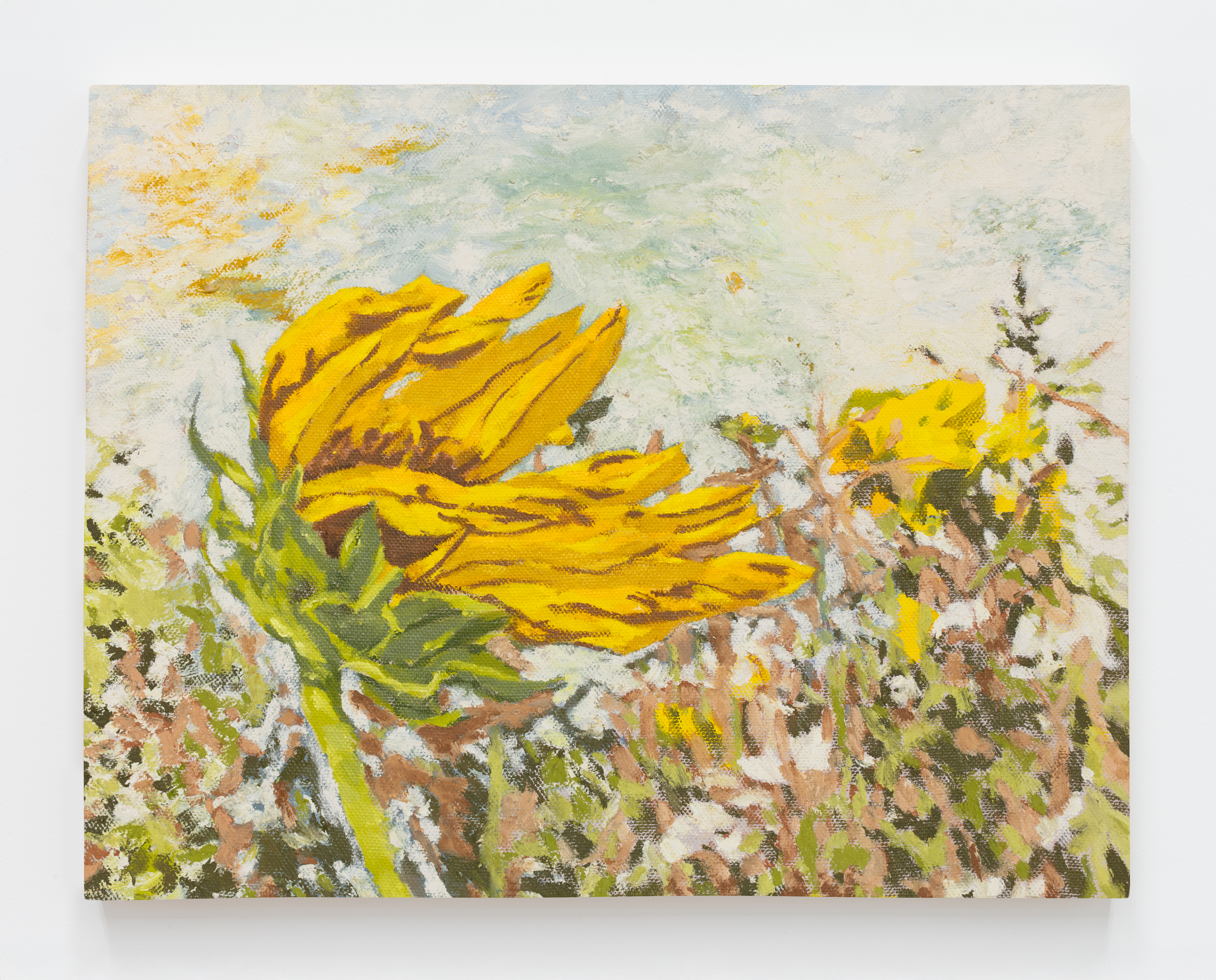
Curtis Kulig, I made a fortune (in the intellect), 2025, 14×18 in.
SCHERER: I have these floor mats that I stand on that really helped me. I try to tell every painter about it. I don’t know if I’m just getting old, but they are these plastic things that they use in restaurants, almost like the ones people have at the airport so they’re not standing on concrete half the day.
KULIG: Your back?
SCHERER: It kills me. If I have to really work on a painting for the whole day, by the end of it I can barely make it out of the studio. Those plastic things are 50 bucks on Amazon and they make all the difference in the world.
KULIG: I recently ordered a posture improver on Amazon.
SCHERER: To stand?
KULIG: It holds my back straight so I’m not bent over painting. But to be honest, it doesn’t work that well. It’s restricting.
SCHERER: I think the only thing really helps with posture is working out, honestly. What do you think connects your works to the show at large?
KULIG: Well, the pieces I chose for the show were a bit of a last minute decision. The gallerist came to the studio and picked out six or seven works. On the day of install, I brought a few extra pieces just to feel out the room. I ended up swapping some of them out, mainly based on hanging them in a way that’s not necessarily traditional in that back space. How about you?
SCHERER: I often think about sehnsucht, or longing, which is the theme of the show. But even if it wasn’t, I feel it’s what one expresses in making art anyway. Whatever I’m missing in life or wishing for subconsciously gets expressed in my art. I create what I don’t have. Years ago, without an apartment, every show was an environment of a domestic space I tried to recreate. The emotional attachment likely comes from it being something you don’t have, something you’re trying to find or create. It’s an idealized thing you lack. What do you think is the longing that you channel into your art?
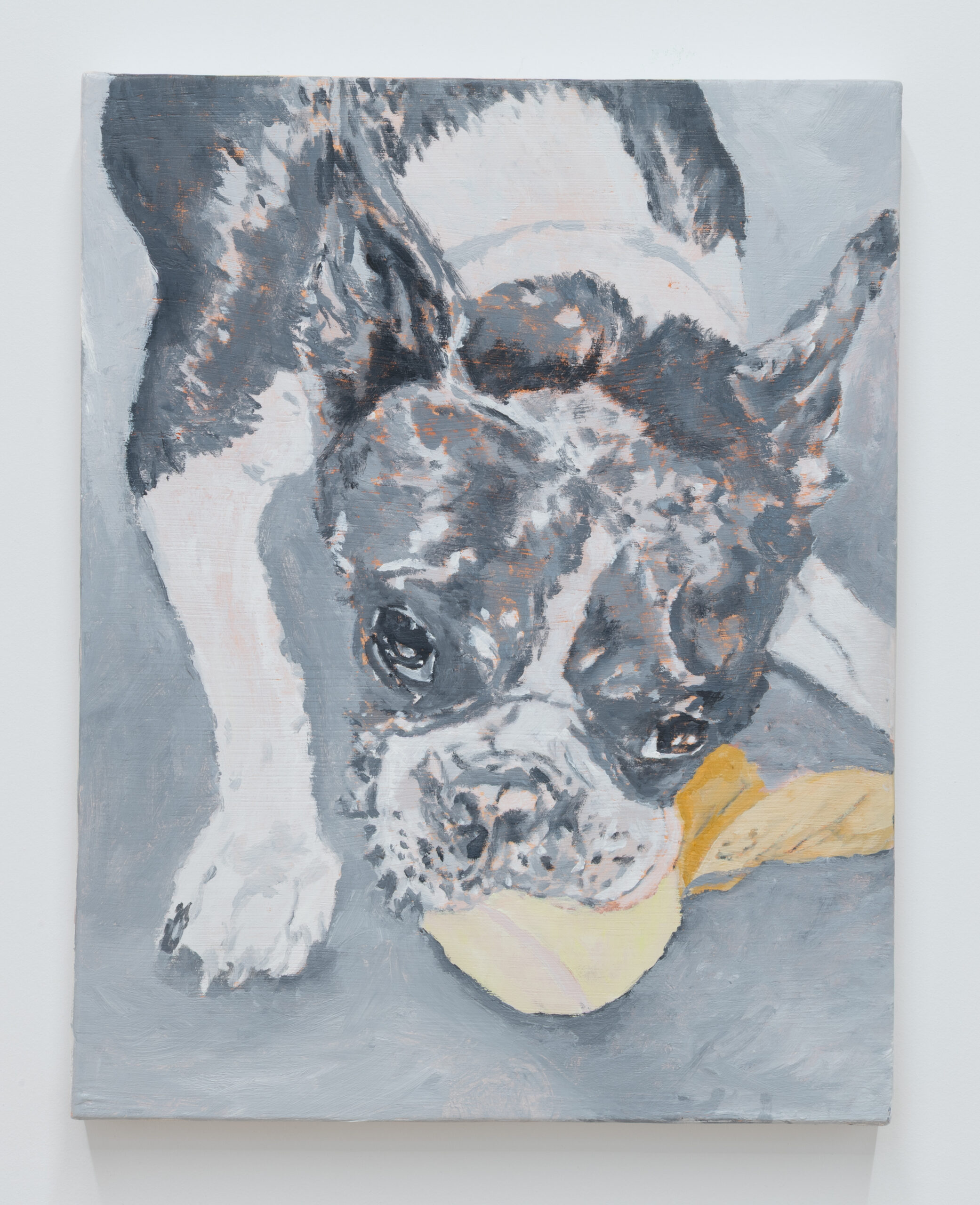
Curtis Kulig, Louie, 2024, 11×14 in.
KULIG: I think right now it’s simply manifesting getting out of the city. There’s a lot of nature, a lot of landscapes. Nature is kind of god to me. I feel like a flower or a plant can be so much more interesting than maybe a figurative work. It’s funny, when I’m approaching other works or going to the museum, I’m rarely actually looking at a piece as just the imagery.
SCHERER: Right. You never think, “Why does that person paint that?” It’s not really a question that another artist would ask. You just try to figure out how the other person made it and see if it’s impressive or why it works. When I’m in New York, I usually paint that sort of thing, and then when I’m in Europe I end up making a series about the Empire State Building or something. I’m working on a show right now for Switzerland this summer, and I’m going to call it For Whom the Bells Toll, the Hemingway book title, and the idea is sort of about the cowbell. But if somebody comes to New York and does a show about New York, everybody here would be like, “That guy’s a fucking idiot.” And now I’m making a show about cowbells. Is that stupid?
KULIG: You’re doing sculpture and painting for the show?
SCHERER: Yeah. I feel like you were a very New York artist and a lot of your work before had that feeling to it. It had much more of that city energy in it.
KULIG: I still see that in my paintings, even when they are based on nature. I still feel that gritty city.
SCHERER: You think so? I don’t feel that at all, actually.
KULIG: You don’t? Maybe it’s more in the technique. When I’m painting in New York, it’s much different than when I was painting in Paris. It’s just about adapting to whatever that environment is and it naturally happens.
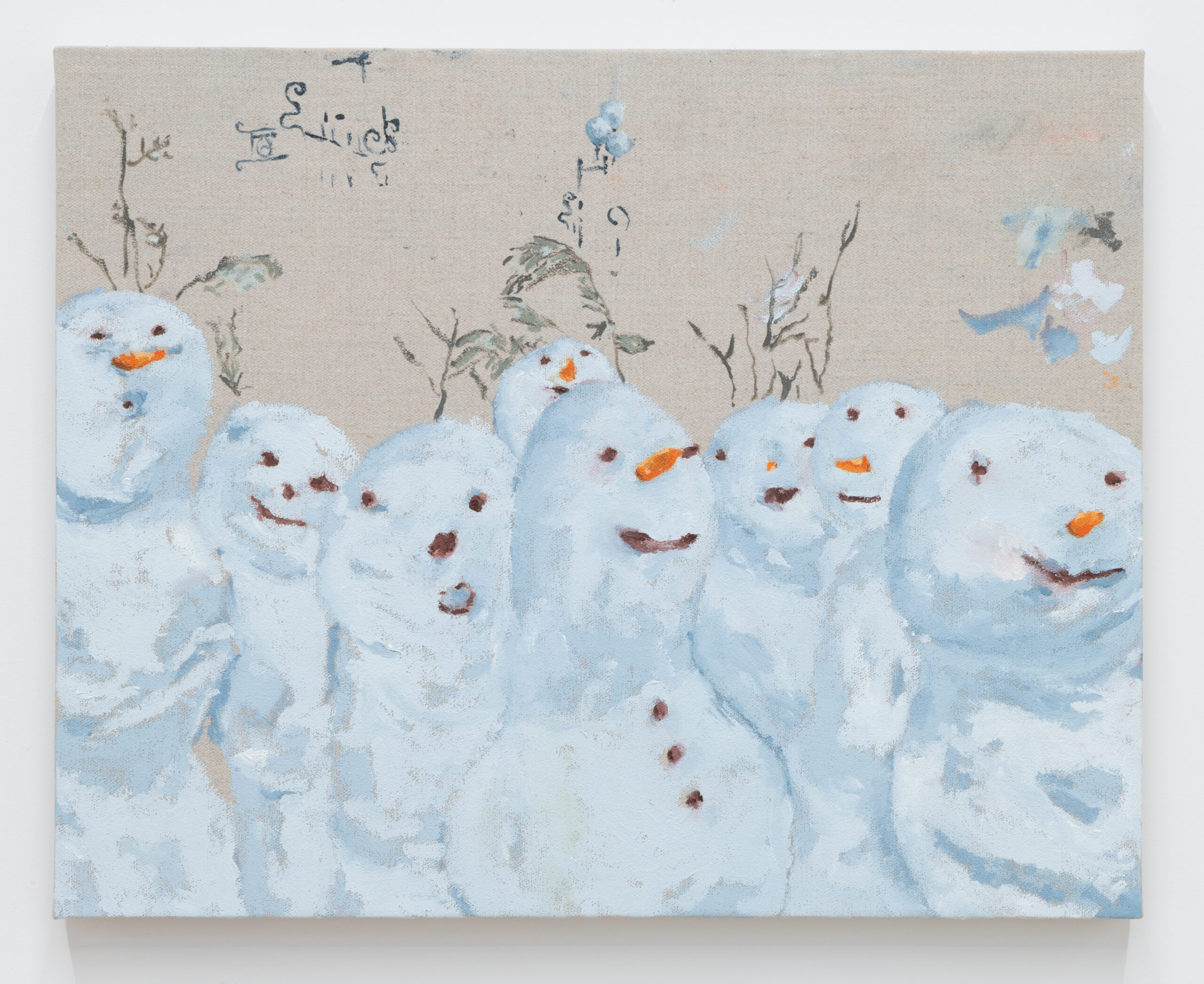
Curtis Kulig, Untitled, 2024, 16×20 in.
SCHERER: I feel the same way about the lenticular work that is in the show. When I’m making so many different things, sometimes I’m really afraid it’s not going to all come together. But I realized that if you just have faith in it and try to be true to yourself, it comes together because it’s all you in some way. It’s almost like when you have something in the studio which you once liked, and then you’re like, “Agh, I will never paint like that again.” But then five years later, it’s the exact thing. I don’t know if you ever see it like that.
KULIG: It doesn’t even take me five years to change my mind about something. I’ll leave the studio that night and then show up the next day and think I’m the greatest painter on planet earth.
SCHERER: For me, sometimes it’s like, “Ugh, I’m kind of done with sculpture. I’m not going to make some sculptures anymore.” And then months go by and I just work on paintings and then suddenly I’m like, “You know what? I would love to make a sculpture.”
KULIG: What do you feel about your lenticulars? Are there times that you feel like making them versus times that you–
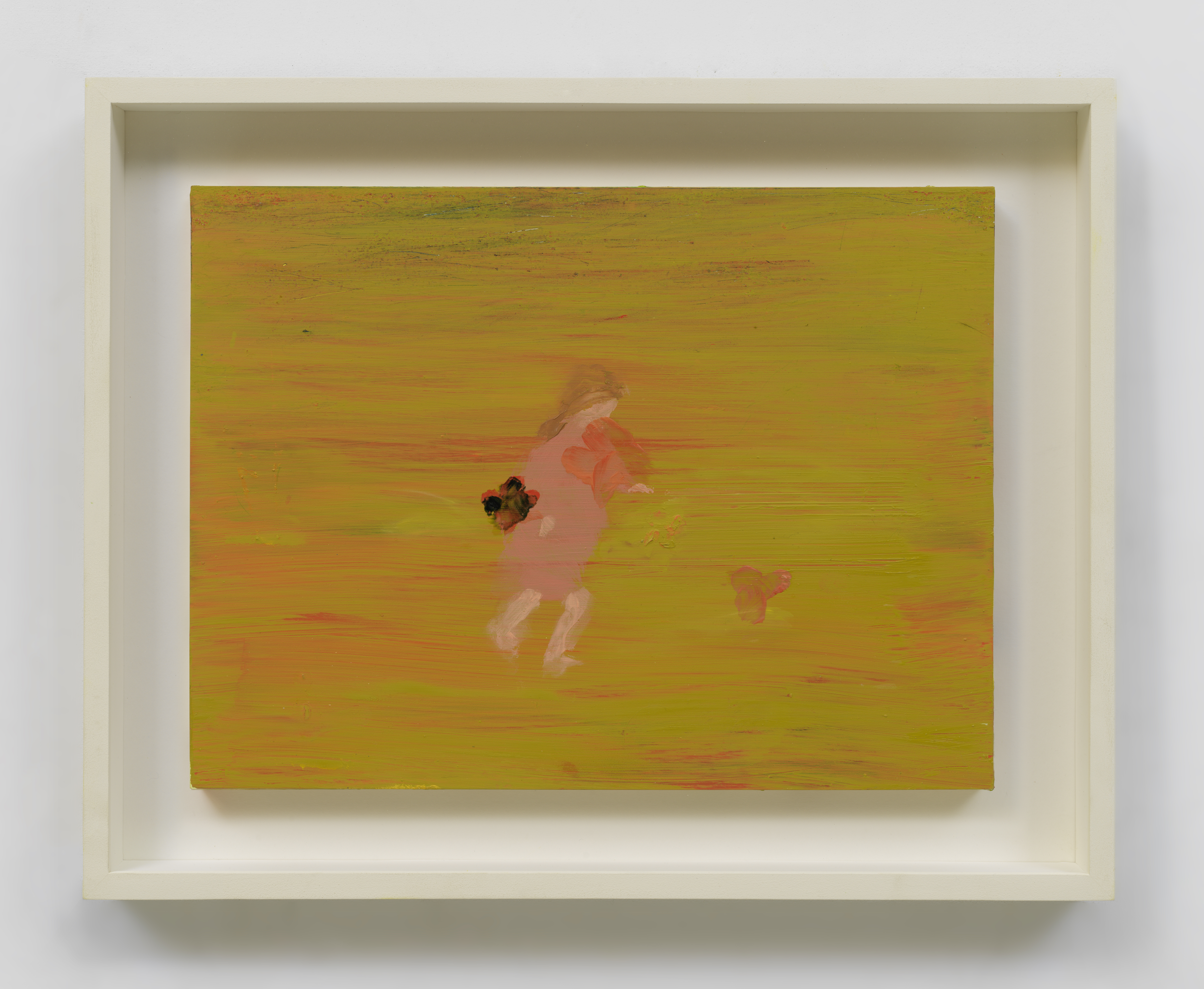
Yves Scherer, Imagine, 2024, 12×16 in.
SCHERER: There’s an exhibition schedule and sometimes I like to show certain works, so I make them for the show. There are times when I think a series is the greatest and other times when I think it’s the worst. In the future, I’m trying to go a bit by the time of the year. In the summer, for example, when I’m traveling and not at the studio, I tend to make a lot of sculptures and lenticular works, just working from my computer. It’s harder for me, almost like having a big studio where you can’t make small paintings. When I’m here, I feel I have to make something, otherwise I feel like I’m not really an artist, more like an office person. When traveling without a studio, that’s just how it works for me. I like it because it gives me the freedom to travel and do things. Do you know what I mean?
KULIG: I can’t do that. Other than drawings, I can’t travel. I’m so particular about my setup.
SCHERER: For me, it was just years without having really a studio that helped. But I like that, it gives you a little break.
KULIG: Right. Where was your first studio in New York?
SCHERER: I was subletting Nick Farhi’s studio in Chelsea on 19th Street. It was so tiny, between 6th and 7th Avenue. It was the back space of this older artist. Coming to New York was a shock to the system. In Europe, I was doing well with a production setup that required a lot of fabrication. But in New York, I didn’t have the network or money to do that, so I had to come up with completely different work. For the next two to four years after moving, I don’t feel I made good stuff. I took a studio in Chelsea and made one work there called Mermaid Lagoon. It was a 16-panel room-filling painting that won the Swiss Art Award. That’s the only work I made there in six months. All my friends said, “This work fucking sucks,” but I still won that prize. But in the bigger picture, what are you longing for other than life outside the city? Are you at peace with the world? I know you’re not so affected by politics, and I’m trying not to be either, but what comes to mind?
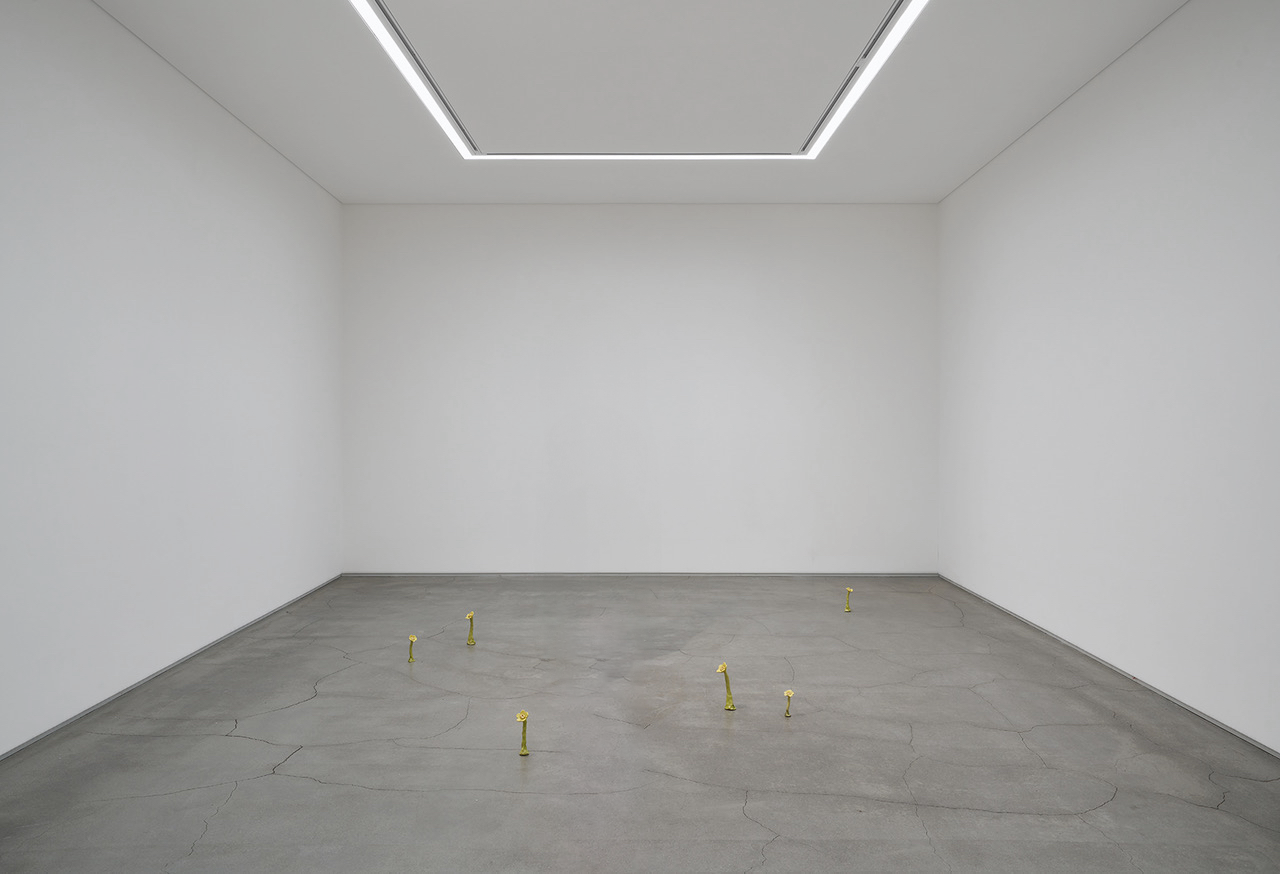
Yves Scherer, Imagine, 2025, Dimensions variable.
KULIG: I don’t know if I’m not affected by politics. I think at this point it’s hard to not be affected to some extent. My energy is very focused on getting outside of the city and having a space that is a little bit of a safe haven where I can be working away from the madness, but dabbling back into the madness a little bit too. I also don’t want to get a space in the deserts of Arizona or something where I’m completely removed. I don’t think I have a longing for much. I’m pretty satisfied and content with what I have. What about you?
SCHERER: I’m making this book and looking back at some of my works. It seems like I’m longing for an America of the 1950s, the way my paintings look. For example, these girls in dresses in the garden. I’m like, “Am I turning into a regressive conservative? Am I longing for the past?” I don’t feel like I’m that person at all, but I wonder if the simple life is actually something of the past, or if longing for the simple life can also be a techno-optimist way of thinking. In the long run, the simple life may not be against progress, technology, or the madness of the world, but could almost be the culmination of it. In movies, tech geniuses are usually portrayed in a garden drinking their tea because everything else has been simplified. Maybe that’s something we long for: feeling like you’re in charge, participating in the bigger world, but working on simple things. Even big architects like Herzog de Meuron, at first they want to do big projects, build stadiums and stuff. But then he’s like, “Now I’m just interested in maybe building a little chapel for my village.” Leverage is a good thing in ways, but it’s satisfying to make things where you don’t use leverage, just you in a very simple way. That’s what’s nice about painting; you create something out of nothing. Even now, where people say everything is going down the drain, I actually believe the world is getting better every day. It’s better than it’s ever been and continues improving. But evolution is not linear. Sometimes you go left, then right to move ahead. It’s probably not a bad thing that things are a bit crazy right now, because maybe some things have to change. And maybe it will change, go all the way back, but we wouldn’t have gone back there if we hadn’t seen the other side.
KULIG: We might be in the lowest of the lows at the moment.
SCHERER: See, I don’t know if I would say it like that.
KULIG: I like your optimistic approach.

